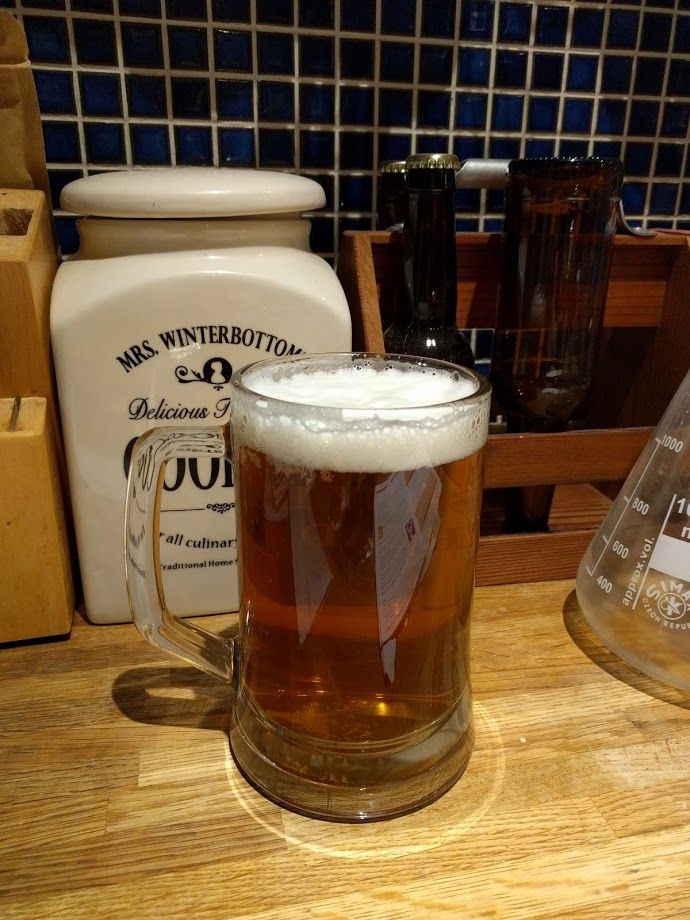#32 Lousy Smärzen

Buoyed by the success of my Kölsch, I was planning to recreate it for my wedding at the end of this year, but as we've bought some 200 bottles of Peroni, I decided to make something a little more distinctive. I liked nearly everything about that beer, but I wanted something a little maltier and a smidgen more crisp and bitter. The obvious candidate was a malty German lager. Malty German lagers seem to go by a million names, but I'm calling mine a Märzen, not because it was brewed in March, but because it allows me to capitalise on what I think is a hilarious name - Lousy Smärzen. Actually, I have to admit that not even the Simpsons fans among my friends clocked the name at first. It's a spin on that classic Treehouse of Horror episode where Marge and Homer attend a PTA meeting to discuss misprinted school calendars, in the midst of some pretty lousy Smarch weather...
Anyway.
The Recipe
2kg pilsner malt
2kg Munich malt
1kg Vienna malt
WLP029 German ale yeast
100g Hallertau Mittlefruh 2.9% AA @ 60min
IBUs 33
OG 1.048
FG 1.008
ABV 5.2%
Ahead of brew day, I made a 2 L starter in two stages. The first was 1L of water with 80g of DME (I'd intended it to be 100g, but I ran out of DME), and the second was another 1 L of water with another 80g of DME (because who doesn't love consistency). Brewer's Friend estimated that it would be a healthy over pitch.
For this brew, I thought I would finish off my ice box mash tun. I hacked and fit together a copper manifold for it for my last brew, but it sat fairly loosely in the outlet and I thought it might have come lose and become blocked with grain and therefore been partly responsible for a stuck sparge. I learned a bit about compression plumbing fittings and made sure the manifold was sitting snugly where it should be.
I heated 12.5 L mash at 66 C and mashed in for 90 minutes. One of the really obvious advantages of a 2-vessel setup over brewing in a bag with the full volume of water is how much more quickly you reach your strike temperature and can begin your mash. I then measured out 19.5 L of sparge water and heated to 90 C for the sparge and mash out.
As it happens, I think my previous stuck sparge probably wasn't down to grain getting in the manifold, because I had the same sparge disaster again on this brew. Opening the tap slowly this time didn't fix it, so I added the additional arrow to my quiver of blowing back up the outlet tube, which – after a few self-conscious goes – finally worked. I collected 26.7 L of wort with a pre-boil OG of 1.041. After a 60 minute boil with (for the first time ever, I think) no cut-outs, I reached a post-boil OG of 1.048. This was a little disappointing given that on my previous brew I'd reached 1.062 with 6kg of grain and 1 litre more water, and I figured that scaling down by 1/6 and reducing the volume of water by the amount that would have been absorbed by the extra kg of grain would land me at around 1.050. But I wasn't off by much and there could be all sorts of reasons why, so I haven't lost any sleep over it.
All the more so because the German Ale yeast eventually made up for lost efficiency by attenuating to over 83% for an ABV of 5.2%. This is the second time I've used that yeast and I'm learning that it takes about 2 1/2 weeks to reach final gravity. It may have had something to do with the fact that it was chugging away at 16 C for 8 days, which is on the cool side, but after reaching 1.013 on day 9, it eventually fell to 1.008 by day 16. I kegged about 18 L and set it to about 10psi on day 17.
For some reason, it always seems to take two doses of gelatin for my beers to clear. I don't know if that's because it actually takes two doses, or because I don't manage to draw off enough sediment in the first few pints to notice the effect of the first charge, but it doesn't seem that a second dose causes any problems. Eventually, after 3 1/2 weeks of cold conditioning, the beer poured nice and clear and what I thought was a rather harsh alcohol note (but may just have been bits of gelatin and yeast floating in the beer) mellowed out. The beer is crisp, a lovely copper colour, perhaps still a tad on the sweet side, but everything I loved about the Kolsch and slightly more complex. If I can replicate this for my wedding beer, I will be very pleased indeed!
